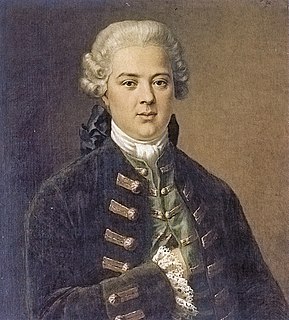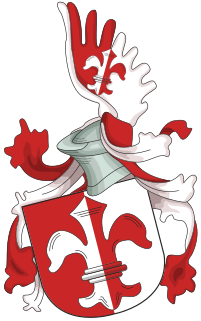
The patricians were originally a group of ruling class families in ancient Rome. The distinction was highly significant in the Roman Kingdom, and the early Republic, but its relevance waned after the Conflict of the Orders. By the time of the late Republic and Empire, membership in the patriciate was of only nominal significance.

In the Holy Roman Empire, the collective term free and imperial cities, briefly worded free imperial city, was used from the fifteenth century to denote a self-ruling city that had a certain amount of autonomy and was represented in the Imperial Diet. An imperial city held the status of Imperial immediacy, and as such, was subordinate only to the Holy Roman Emperor, as opposed to a territorial city or town which was subordinate to a territorial prince – be it an ecclesiastical lord or a secular prince.

In ancient Rome, the plebeians were the general body of free Roman citizens who were not patricians, as determined by the census, or in other words "commoners". Both classes were hereditary.
In ancient Rome, a gens was a family consisting of individuals who shared the same nomen and who claimed descent from a common ancestor. A branch of a gens was called a stirps. The gens was an important social structure at Rome and throughout Italia during the period of the Roman Republic. Much of individuals' social standing depended on the gens to which they belonged. Certain gentes were classified as patrician, others as plebeian; some had both patrician and plebeian branches. The importance of membership in a gens declined considerably in imperial times, although the gentilicium continued to be used and defined the origins and dynasties of Roman emperors.

Patricianship, the quality of belonging to a patriciate, began in the ancient world, where cities such as Ancient Rome had a social class of patrician families, whose members were initially the only people allowed to exercise many political functions. In the rise of European towns in the 12th and 13th century, the patriciate, a limited group of families with a special constitutional position, in Henri Pirenne's view, was the motive force. In 19th century Central Europe, the term had become synonymous with the upper Bourgeoisie and cannot be interchanged with the medieval patriciate in Central Europe. In German-speaking parts of Europe as well as in the maritime republics of the Italian Peninsula, the patricians were as a matter of fact the ruling body of the medieval town. Particularly in Italy, they were part of the nobility.

Welser was a German banking and merchant family, originally a patrician family based in Augsburg and Nuremberg, that rose to great prominence in international high finance in the 16th century as bankers to the Habsburgs and financiers of Charles V, Holy Roman Emperor. Along with the Fugger family, the Welser family controlled large sectors of the European economy, and accumulated enormous wealth through trade and the German colonization of the Americas, including slave trade. The family received colonial rights of the Province of Venezuela from Charles V, who was also King of Spain, in 1528, becoming owners and rulers of the South American colony of Klein-Venedig, but were deprived of their rule in 1546. Philippine Welser (1527–1580), famed for both her learning and her beauty, was married to Archduke Ferdinand, Emperor Ferdinand I's son.

The nobility of Italy comprised individuals and their families of the Italian Peninsula, and the islands linked with it, recognized by the sovereigns of the Italian city-states since the Middle Ages, and by the kings of Italy after the unification of the region into a single state, the Kingdom of Italy.

Anton Koberger was the German goldsmith, printer and publisher who printed and published the Nuremberg Chronicle, a landmark of incunabula, and was a successful bookseller of works from other printers. In 1470 he established the first printing house in Nuremberg. Koberger was the godfather of Albrecht Dürer, whose family lived on the same street.
Switzerland, officially the Swiss Confederation, is a collection of semi-autonomous cantons. As membership of the confederation has fluctuated throughout history, each of these cantons has its own unique history and nobility. Typically, each canton had its own constitution, currency, jurisdiction, habits, customs, history, and nobility.

The Great Council or Major Council was a political organ of the Republic of Venice between 1172 and 1797. It was the chief political assembly, responsible for electing many of the other political offices and the senior councils that ran the Republic, passing laws, and exercising judicial oversight. Following the lockout of 1297, its membership was established on hereditary right, exclusive to the patrician families enrolled in the Golden Book of the Venetian nobility.

The Imperial City of Nuremberg was a free imperial city — independent city-state — within the Holy Roman Empire. After Nuremberg gained piecemeal independence from the Burgraviate of Nuremberg in the High Middle Ages and considerable territory from Bavaria in the Landshut War of Succession, it grew to become one of the largest and most important Imperial cities, the 'unofficial capital' of the Empire, particularly because numerous Imperial Diets and courts met at Nuremberg Castle between 1211 an 1543. Because of the many Diets of Nuremberg Nuremberg became an important routine place of the administration of the Empire during this time. The Golden Bull of 1356, issued by Emperor Charles IV, named Nuremberg as the city where newly elected kings of Germany must hold their first Imperial Diet, making Nuremberg one of the three highest cities of the Empire.

The Imhoff, Imhof or Im Hof family is a noble patrician family that belonged to the wealthy trading dynasties and ruling oligarchy in the Free Imperial City of Nuremberg during its Golden Age in the Renaissance. The Imhoff Trading Company was one of the most important European traders between the 15th and 17th centuries. It maintained branches and trade connections throughout Europe and financed European courts with loans.
The Norwegian patriciate was a social class in Norway from the 17th century until the modern age; it is typically considered to have ended sometime during the 19th or early 20th century as a distinct class. Jørgen Haave defines the Norwegian patriciate as a broad collective term for the civil servants (embetsmenn) and the burghers in the cities who were often merchants or ship's captains, i.e. the non-noble upper class. Thus it corresponds to term patriciate in its modern, broad generic sense in English. The patricians did not constitute a legally defined class as such, although its constituent groups, the civil servants and the burghers held various legal privileges, with the clergy de jure forming one of the two privileged estates of the realm until 1814.

Tucher is a noble patrician family from Nürnberg. Like the Fugger and Welser families from Augsburg, their company run trading branches across Europe between the 15th and 17th centuries, although on a somewhat smaller scale. The Protestant family played an import part in the economical and cultural development as well as in local politics. They were admitted to the governing council of the free imperial city since 1340, a hereditary privilege, and listed in the Dance Statute. After the acquisition of Simmelsdorf Castle in 1598, the family was named Tucher von Simmelsdorf and ennobled in 1697. In 1815, they became Bavarian barons.

Haller von Hallerstein is a noble patrician family from the Free Imperial City of Nuremberg which belonged to the wealthy ruling oligarchy during Nuremberg's Golden Age in late Middle Ages and the Renaissance.

The Pfinzing von Henfenfeld were one of the oldest patrician families in the imperial city of Nuremberg. They are first mentioned in a document in 1233 and were represented in the inner council from the beginning of the council records in 1274 until their extinction in 1764. This made them the oldest Nuremberg council family. According to the dance Statute of 1521 belonged to the twenty old lines eligible for Ratsfähigen. In 1764 the male line died out.

The Patriciate of the Imperial City of Nuremberg, the families entitled to the Inner Council, represented the actual center of power in Nuremberg until the French occupation in 1806.

Pfinzing Castle or Mornek Castle is one of three preserved castles of the Nuremberg patriciate in Feucht, along with the Tucherschloss and the Zeidlerschloss. The Castle has been owned and used by the market town of Feucht since 1988. Concerts and art exhibitions are held in the entrance hall.

The Stromer von Reichenbach are one of the oldest patrician families of the Imperial City of Nuremberg, first mentioned in a document in 1254. The Stromers were represented in the Inner Council from the beginning of the tradition in 1318, with longer interruptions in the 16th and 17th centuries, until the end of the Imperial City period in 1806, and according to the Dance Statute they belonged to the twenty old councilable families.

The Nuremberg City Hall is located in the old town of Nuremberg, just east of the choir of the Sebalduskirche. It is part of the Historic Mile of Nuremberg as one of the city's sights. The imposing Renaissance building by architect Jakob Wolff the Younger (1571–1620) was severely damaged during World War II and had to be largely rebuilt in the 1950s. In the process, the structure was shortened by two window axes on the north side. On the south side is a core Gothic Saalbau, which Albrecht Dürer designed. The Lochgefängnisse, located in the basement, are considered a tourist attraction, as is the Beautiful Fountain, located directly in front of the New City Hall, designed by Kurt Schneckendorf in 1951 and built from 1954 to 1956. This building replaced the row of houses between the Old Town Hall and the Hauptmarkt, which had been destroyed during the war.


















